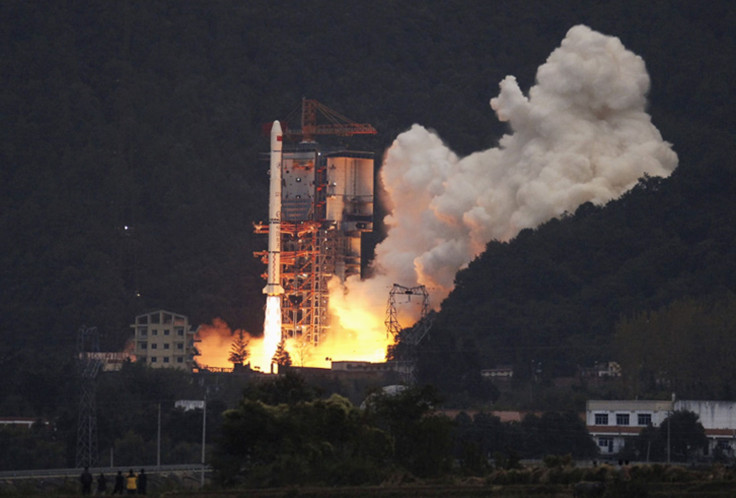China Eyes The Moon: Unmanned Probe By Year-End, Humans After 2020

China will launch its first probe to the moon by the end of this year, as part of a larger plan that involves collecting samples from the lunar surface before heading back to Earth by 2017, and send humans within the next decade, government officials announced on Wednesday.
The probe, named Chang'e-3, marks the second phase of China’s lunar program, following the successes of its two previous missions. The Chang'e-1, launched in 2007, photographed the lunar surface and examined the distribution of elements. In 2010, Chang'e-2 was launched to take higher-resolution images of the moon and create a high-definition map of Sinus Iridium, the area where Chang'e-3 is expected to land.
“The Chang'e-3 mission makes best use of a plethora of innovative technology. It is an extremely difficult mission that carries great risk,” Ma Xingrui, head of China's space exploration body and chief commander of the lunar program, was quoted as saying by the official Xinhua news agency.
The agency also reported that the Chang'e-3 mission, which will be launched from the Xichang Satellite Launch Center in southwest China, will perform a “soft-landing,” which means that the spacecraft will land on the moon’s surface after using a technique to slow its speed.
According to a government statement, the Chang'e-3 mission, which will be the first one from China to land on a celestial body, has gone through the research and construction phase and is currently in its launch-implementation stage.
After it lands on the moon, Chang'e-3 will release a rover to move around the lunar surface to collect information about the lunar territory and evaluate living conditions, The Christian Science Monitor reported, citing Ye Peijian, chief commander of the Chang'e-3 mission.
Reuters reported that Chinese scientists have also been considering the possibility of sending humans to the moon after 2020. In June, the country completed its latest manned space program, when three Chinese astronauts spent 15 days in orbit and docked with an experimental space laboratory.
Concerns over how China will use its space program in the future has led the U.S. government to bar NASA from having any direct involvement with China’s space program.
And, while Beijing says that its space program is for peaceful purposes, the U.S. Defense Department has raised concerns over China’s increasing space capabilities, claiming the Asian giant could prevent its rivals from using space-based assets during emergency situations.
© Copyright IBTimes 2024. All rights reserved.






















